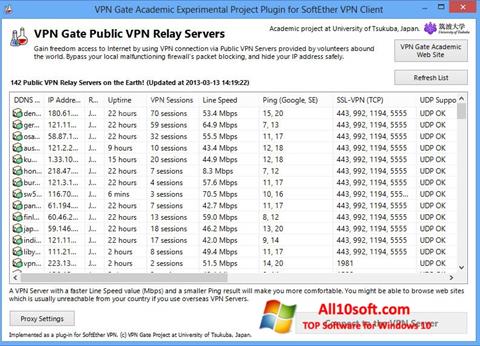

This would also be a good time to verify that the user actually knows how to establish the VPN connection and that the user is using the correct username and password. You can check the privileges either by looking at the Dial In tab on the user's properties sheet in Active Directory Users And Computers, or by looking at the domain's remote access policy. If the client is dialing in to the server, rather than connecting through the Internet, it could be that the remote user has no dial-in privileges. If the authentication methods appear to be set correctly, the next step is to check the technique by which the client is trying to connect to the VPN server. SEE: Understanding VPNs and how to choose one (CNET) More things to check If you are using RADIUS Authentication, you must verify that the client supports RADIUS and that the VPN server has no trouble communicating with the RADIUS server.
#Aventail connect 10 windows
I usually prefer to use Windows Authentication in VPN environments, but RADIUS is also a popular choice. Now, select the properties sheet's Security tab, select the Advanced radio button, and click the Settings button to reveal the available authentication methods. This will reveal the connection's properties sheet.

For a Windows XP system, right-click on the VPN connection and select the Properties command from the resulting shortcut menu. The method for checking the authentication method on the client end varies depending on the client's operating system. You can enable or disable authentication methods by selecting or deselecting the appropriate check boxes. This will cause Windows to display a dialog box with all of the available authentication methods. Select the Security tab and click the Authentication Methods button. This will display the server's properties sheet. Right-click on the listing for your VPN server and select the Properties command from the resulting shortcut menu. Now, the Routing And Remote Access snap-in should be added to the console. Select Routing And Remote Access from the list and click the Add button, followed by the Close and OK buttons. This will reveal a list of the available snap-ins. When you see the Add / Remove Snap In properties sheet, click the Add button on the Standalone tab.

Now, select the Add / Remove Snap In command from the Console menu. When you do, Windows will open an empty Microsoft Management Console session. You can check to see which authentication methods the VPN server is configured to use by entering the MMC command at the Run prompt. 17 Terminal commands every user should know.20 steps to decommission a redundant data center facility.Behind the scenes: A day in the life of a database administrator.5 programming languages network architects should learn (free PDF).You can check this by opening the server's Control Panel and clicking on the Administrative Tools icon, followed by the Services icon. If your VPN server is rejecting client connections, the first thing you need to do is to check to make sure the Routing And Remote Access service is running. Part of the reason this problem is so common is that there are a lot of issues that can cause a connection to be rejected. Having a VPN client's connection rejected is perhaps the most common VPN problem. The inability to reach locations that lie beyond the VPN server.The acceptance of an unauthorized connection.There are four types of problems that tend to occur with VPN connections. SEE: How to work from home: IT pro's guidebook to telecommuting and remote work (TechRepublic Premium) What's the problem? Here are several techniques you can use to troubleshoot VPN connections. Even so, VPN connections do occasionally experience problems.

#Aventail connect 10 free
Although VPNs initially became popular because they free companies from the expense of connecting networks with dedicated leased lines, part of the reason that VPNs have become so accepted is that they tend to be very reliable. VPNs have gone from obscurity to being a common method of linking private networks together across the Internet. This tip was first published in May 2003. Editor's note: In the video, Brandon Vigliarolo uses Microsoft Windows Server 2016, and some of the steps and menus are different from the following tutorial by Brien Posey.


 0 kommentar(er)
0 kommentar(er)
